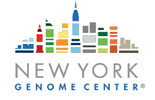Submitted by ja607 on
| Title | Genome Sequencing of Autism-Affected Families Reveals Disruption of Putative Noncoding Regulatory DNA. |
| Publication Type | Journal Article |
| Year of Publication | 2016 |
| Authors | Turner, TN, Hormozdiari, F, Duyzend, MH, McClymont, SA, Hook, PW, Iossifov, I, Raja, A, Baker, C, Hoekzema, K, Stessman, HA, Zody, MC, Nelson, BJ, Huddleston, J, Sandstrom, R, Smith, JD, Hanna, D, Swanson, JM, Faustman, EM, Bamshad, MJ, Stamatoyannopoulos, J, Nickerson, DA, McCallion, AS, Darnell, R, Eichler, EE |
| Journal | Am J Hum Genet |
| Volume | 98 |
| Issue | 1 |
| Pagination | 58-74 |
| Date Published | 2016 Jan 07 |
| ISSN | 1537-6605 |
| Keywords | Autistic Disorder, DNA, Exome, Female, Genome, Human, Humans, Male, Pedigree, Polymorphism, Single Nucleotide |
| Abstract | We performed whole-genome sequencing (WGS) of 208 genomes from 53 families affected by simplex autism. For the majority of these families, no copy-number variant (CNV) or candidate de novo gene-disruptive single-nucleotide variant (SNV) had been detected by microarray or whole-exome sequencing (WES). We integrated multiple CNV and SNV analyses and extensive experimental validation to identify additional candidate mutations in eight families. We report that compared to control individuals, probands showed a significant (p = 0.03) enrichment of de novo and private disruptive mutations within fetal CNS DNase I hypersensitive sites (i.e., putative regulatory regions). This effect was only observed within 50 kb of genes that have been previously associated with autism risk, including genes where dosage sensitivity has already been established by recurrent disruptive de novo protein-coding mutations (ARID1B, SCN2A, NR3C2, PRKCA, and DSCAM). In addition, we provide evidence of gene-disruptive CNVs (in DISC1, WNT7A, RBFOX1, and MBD5), as well as smaller de novo CNVs and exon-specific SNVs missed by exome sequencing in neurodevelopmental genes (e.g., CANX, SAE1, and PIK3CA). Our results suggest that the detection of smaller, often multiple CNVs affecting putative regulatory elements might help explain additional risk of simplex autism. |
| DOI | 10.1016/j.ajhg.2015.11.023 |
| Alternate Journal | Am J Hum Genet |
| PubMed ID | 26749308 |
| PubMed Central ID | PMC4716689 |
| Grant List | U54 HD083091 / HD / NICHD NIH HHS / United States HHSN267200700021C / HD / NICHD NIH HHS / United States T32 GM007814 / GM / NIGMS NIH HHS / United States HHSN275200800015C / HD / NICHD NIH HHS / United States 5T32GM07814 / GM / NIGMS NIH HHS / United States UM1 HG008901 / HG / NHGRI NIH HHS / United States T32 HG000035 / HG / NHGRI NIH HHS / United States 2T32HG000035 / HG / NHGRI NIH HHS / United States R01 NS062972 / NS / NINDS NIH HHS / United States NS062972 / NS / NINDS NIH HHS / United States HHSN267200700023C / HD / NICHD NIH HHS / United States / / Howard Hughes Medical Institute / United States T32 GM007266 / GM / NIGMS NIH HHS / United States |




